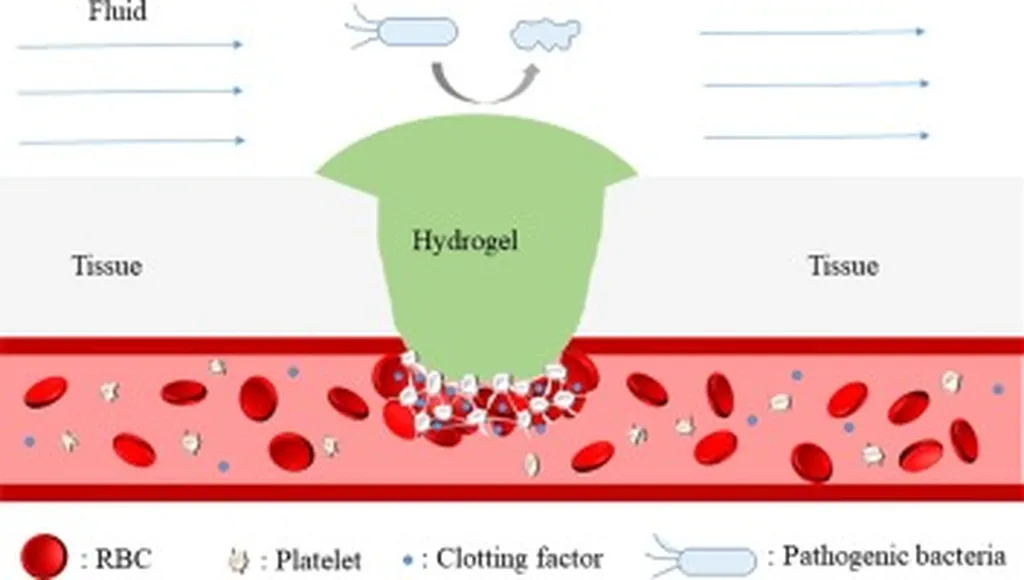In the realm of soft tissue repair and adhesion prevention, a groundbreaking innovation has emerged from the labs of Wenle Chen, a researcher affiliated with the Department of Colorectal Surgery at Shenzhen Second People’s Hospital and the Wenzhou Institute of the University of Chinese Academy of Sciences. Inspired by the natural world, Chen and his team have developed a bioinspired hydrogel patch with controllable adhesion, promising to revolutionize medical treatments and potentially impact the energy sector through its innovative adhesive technology.
The patch, detailed in a recent study published in *Materials Futures* (translated as *Materials Horizons*), mimics the adhesion mechanisms of suction cups and the antifouling properties of eyeball surfaces. This dual inspiration allows the patch to adhere to tissues with precision and ease, much like a suction cup, while also preventing unwanted tissue adhesion, similar to the smooth surface of an eyeball.
The patch’s design is anisotropic, meaning it has different properties on each side. The adhesive side utilizes a multi-adhesive mechanism that initially relies on physical interactions for position adjustment, followed by a chemical reaction to form a firm covalent bond. This spatiotemporal control of adhesive behavior allows for precise placement and strong adhesion. “The initial physical adhesion provides a reversible attachment, enabling surgeons to adjust the patch’s position as needed,” explains Chen. “Once satisfied with the placement, the chemical bonding ensures a secure and lasting attachment.”
On the barrier side, the patch features a highly hydrated surface derived from polyethylene glycol and polyvinyl alcohol hydrogels. This surface repels tissue proteins, effectively preventing tissue adhesion. Additionally, the patch’s intrinsic pores and charges enable the adsorption of positively charged inflammatory factors, while loaded drugs can be released sustainably. “This dual functionality not only promotes healing but also reduces inflammation, making it an ideal solution for soft tissue repair,” Chen adds.
The patch’s potential extends beyond medical applications. The controllable adhesion technology could inspire innovations in the energy sector, particularly in the development of advanced materials for energy storage and conversion. For instance, the patch’s ability to adhere strongly yet reversibly could be adapted for use in flexible and wearable energy devices, enhancing their durability and performance.
In vivo experiments have demonstrated the patch’s strong yet controllable adhesion, its effectiveness in reducing inflammation, and its ability to promote healing. This innovative design introduces a new paradigm of ‘revocable’ adhesion, offering significant clinical potential for soft tissue repair and adhesion prevention.
As the research continues to evolve, the bioinspired hydrogel patch could pave the way for future developments in medical treatments and beyond. The study’s findings, published in *Materials Futures*, highlight the importance of looking to nature for inspiration in solving complex scientific challenges. With its unique design and versatile applications, this bioinspired hydrogel patch is poised to make a significant impact on the future of healthcare and potentially the energy sector.

